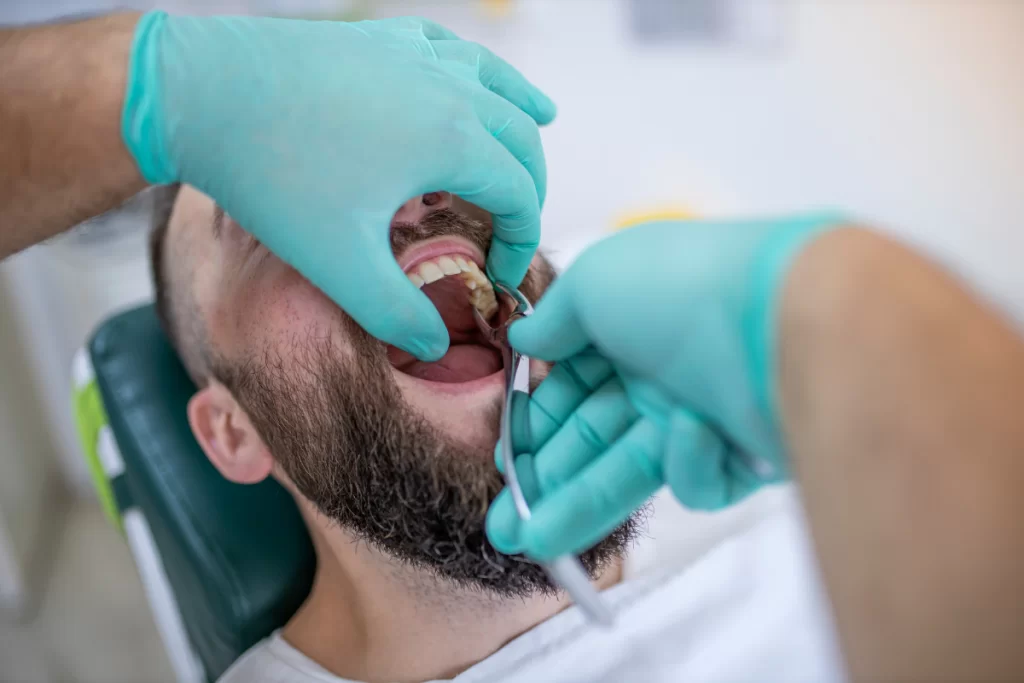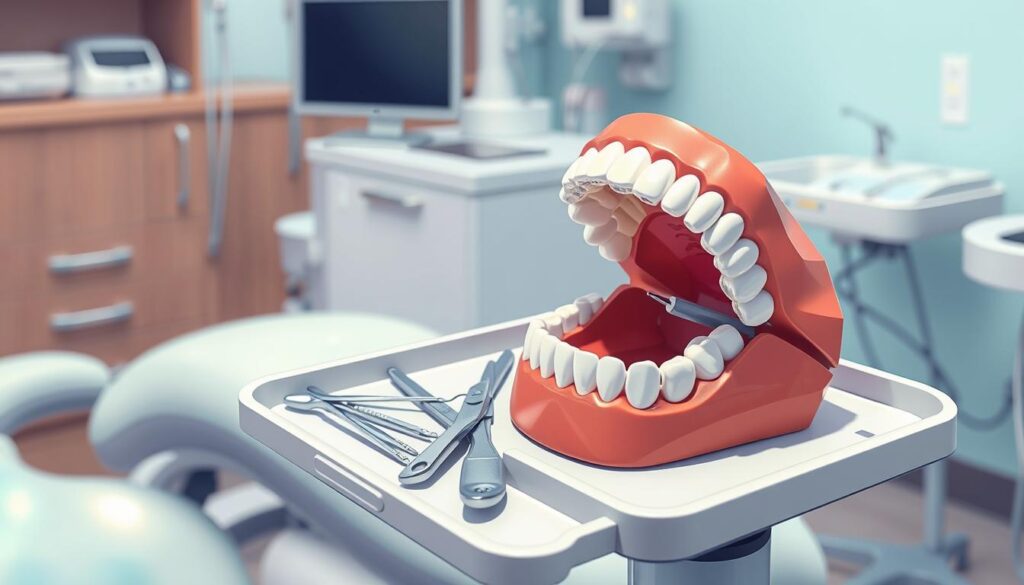
Tooth extraction is a common dental procedure. It involves removing a tooth from its socket in the bone. Knowing about the tooth extraction procedure can make patients feel more at ease.
It's important to understand why a tooth might need to be extracted. This could be due to decay, crowding, or other dental issues. Learning about the dental extraction steps can help reduce anxiety and make the experience smoother.
In this guide, we will delve into the details of tooth extractions. We will discuss the reasons behind them and why it's crucial to be well-informed before your appointment.
Tooth extraction is a common dental procedure. It involves removing a tooth from its socket in the bone. This dental procedure explanation helps understand why and when it's done.
The definition of tooth extraction means removing a tooth from its place in the jawbone. It's done to fix serious dental problems like tooth decay or gum disease. Dentists or oral surgeons do this procedure with care, making sure patients know what to expect.
There are two main types of tooth extractions:
Many dental problems can lead to tooth extraction. Some common tooth extraction reasons include:
Dealing with these problems early is key to good oral health. Knowing about tooth extraction is important for dental care.

Getting ready for a tooth extraction involves a lot of planning. A detailed dental check-up is key to making sure both the dentist and patient are ready. This part will cover how to prepare, the extraction steps, and the options for pain relief.
The journey starts with a thorough dental check-up, which might include X-rays. Dentists look at your medical history, current meds, and allergies. Talking about pain relief and aftercare is crucial for a smooth experience.
The extraction process usually takes 20 to 40 minutes. First, the dentist uses anesthesia to numb the area. Then, they gently rock the tooth back and forth to loosen it. For surgical extractions, a small cut in the gum might be needed.
After removing the tooth, the dentist cleans the area. They might also stitch it to help it heal properly.
There are different types of anesthesia for tooth extractions. Local anesthesia numbs just the tooth area. Sedation relaxes you during the whole procedure. General anesthesia is for more complex cases, making you sleep through it.
The dentist chooses the best anesthesia based on your comfort, the complexity of the extraction, and their advice.

| Anesthesia Type | Description | Ideal Use |
|---|---|---|
| Local Anesthesia | Numbs the specific area around the tooth | Simple extractions or those requiring minimal discomfort |
| Sedation | Relaxes the patient and reduces anxiety | Patients with dental phobia or anxiety |
| General Anesthesia | Renders the patient unconscious | Complex extractions or multiple teeth extractions |
In this tooth extraction overview, we looked at the key parts of the procedure. We talked about the different types of extractions and why people might need them. This helps people understand their dental health better.
Knowing about the procedure's steps, from start to finish, is important. It shows how crucial it is to see a professional dentist. A skilled dentist makes the process smoother and helps with recovery.
Understanding tooth extractions helps patients make better choices for their teeth. Working with a good dentist is key. This way, people can feel better right away and keep their teeth healthy for a long time.
